INTRODUCTION
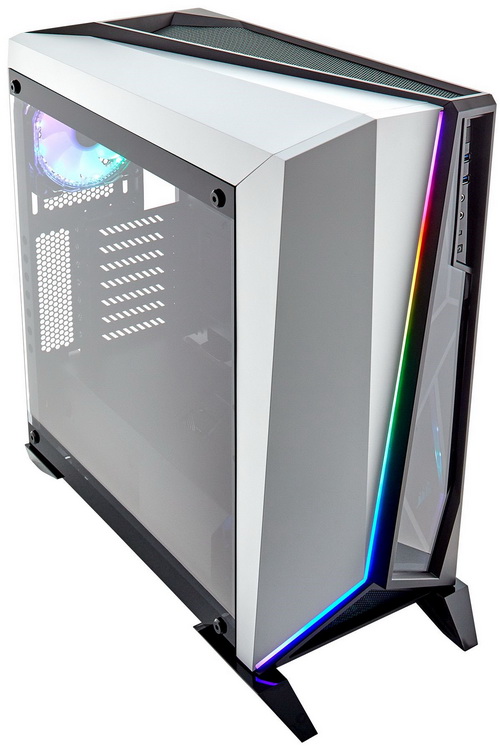
When the first tempered glass PC cases made their debut roughly 3 years ago they had hefty price tags attached to them just like with most RGB gaming peripherals when they were introduced in the market shortly after. The good thing about the electronics industry in general however is that it never stays still and as a result prices tend to take serious hits as time goes by. So today consumers can find numerous affordable PC cases in the market that feature not only tempered glass side panels but also RGB lighting. CORSAIR released the Carbide Series Spec-Omega mid-tower this January and after a very positive reaction by both media and consumers all over the world they decided to take it back to the drawing board both for further tweaks and to also to swap its white LED strips and fan with RGB ones. The result is the brand new Carbide Series Spec-Omega RGB Mid-Tower Tempered Glass Gaming Case which is here with us today.
Founded in 1994, CORSAIR supplies high-performance products purchased primarily by PC gaming enthusiasts who build their own PCs or buy pre-assembled customized systems. The company's award-winning products include DDR3 and DDR4 memory upgrades, computer cases, PC cooling products, gaming headsets, gaming keyboards, gaming mice, power supply units, USB flash drives, solid-state drives and system monitoring and control devices.
Just like the original Spec-Omega the Spec-Omega RGB is a compact mid-tower aimed towards people with space restrictions who are also looking to get something good looking for their desks. Leaving out the fact that the Spec-Omega RGB version features a PSU shroud/cover and comes ready with a front RGB strip (30 LEDs) and two HD120 120mm RGB fans instead of the front white LED strip and a single 120mm white LED fan found in its predecessor everything else remains pretty much the same (of course both feature the same tempered glass side panel). So once again we find enough room for up to ATX sized mainboards, three 2.5" (vertical drive tray) and two 3.5" drives (removable drive cage), six 120mm fans and/or two 240/280/360 radiators (240/360mm front and 240/280mm top), 170mm tall CPU coolers, 370mm long graphics cards and 180mm long power supply units. The new Spec-Omega RGB is also compatible with CORSAIR's iCUE software (you can check our last look at this specific software suite here) so that means that you have the ability to manually adjust the color and modes of both the front RGB LED strip and its two HD120 RGB fans (you can also synchronize the colors and modes with other CORSAIR RGB compatible devices). Also since we never got the chance to test the original Spec-Omega RGB mid-tower CORSAIR was kind enough to send one over so we could do a side to side comparison with the new RGB version.
SPECIFICATIONS AND FEATURES

PACKAGING AND CONTENTS
CORSAIR ships the Spec-Omega RGB inside a plain cardboard box that has a product picture at the front.
On both sides we see two product pictures and the specifications table printed in 3 languages.
At the rear of the box there's an exposed view of the Spec-Omega RGB.
I was a bit surprised to see that the Spec-Omega RGB is not only wrapped inside a plastic bag but also placed between not two but three thick foam spacers.
Along with the case itself you will also get an Allen key (with which you can remove the tempered glass side panel), 6 cable ties, installation guide, warranty information paper and 6 small bags filled with screws, spacers and standoffs.
THE SPEC-OMEGA RGB EXTERIOR
Measuring 516mm in height, 495mm in length/depth and 232mm in width/thickness the Spec-Omega RGB is a medium-sized mid-tower.
In terms of design and size the new Spec-Omega RGB is identical to its predecessor (seen on the right).
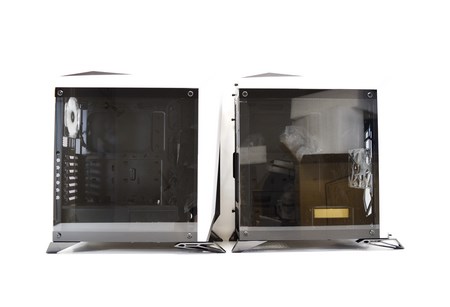
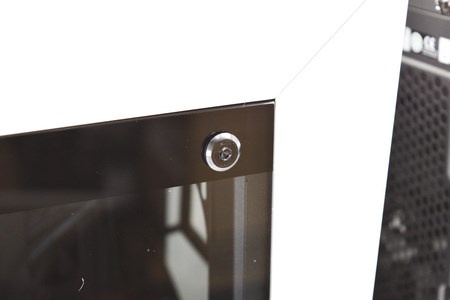
Both towers feature a right side panel made out of tempered glass which for reasons unknown is held in place by Allen screws (perhaps CORSAIR wanted to increase safety for LAN events?).
The fascia is a combination of plastic and tempered glass.
The I/O is located at the front and includes the on/off power button with its LED, two USB 3.0 ports, headphones and microphone 3.5mm ports, HDD activity LED and the reset button.
Worth pointing out is that the fascia on both cases features a LED strip however it's white for the original Spec-Omega and RGB for the Spec-Omega RGB.
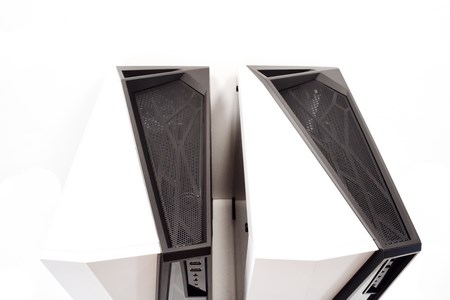
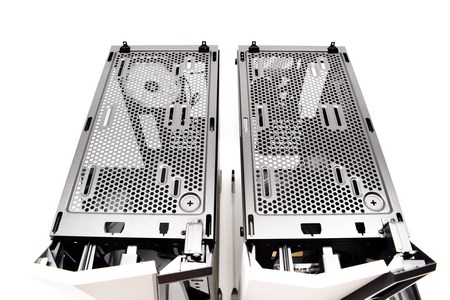
A large plastic mesh is placed at the top of the towers underneath which there's enough room either for two 120/140mm fans or a 240/280mm radiator (unfortunately an air-filter is not available).
The same goes for the front since here you have enough room either for three 120/140mm fans or a 240/280/360mm radiator.
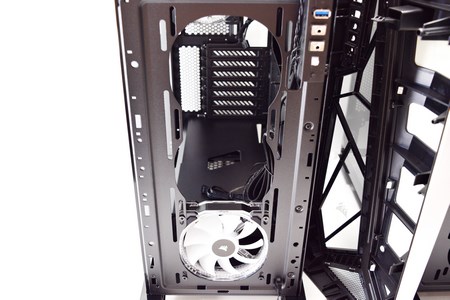
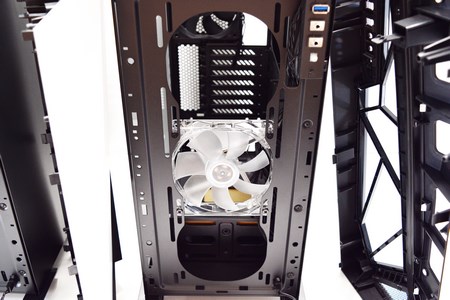
Same as the LED strip the new Spec-Omega RGB features an pre-installed 120mm HD120 RGB fan while its predecessor features an 120mm white LED fan.
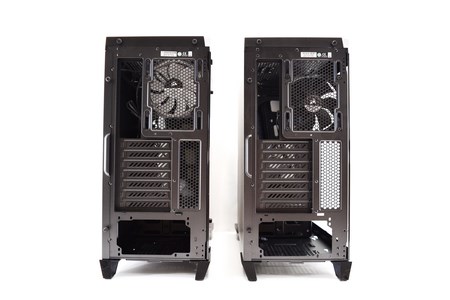
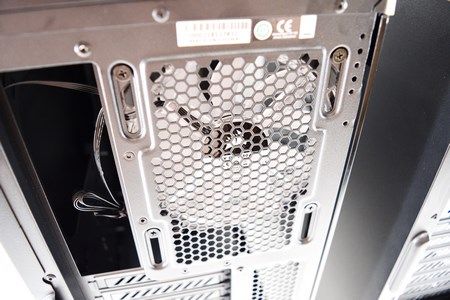
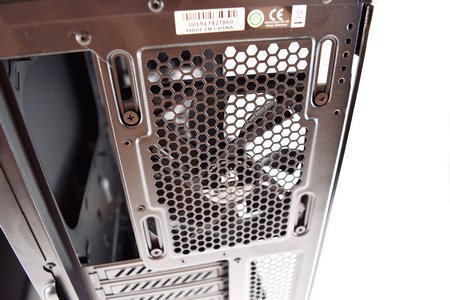
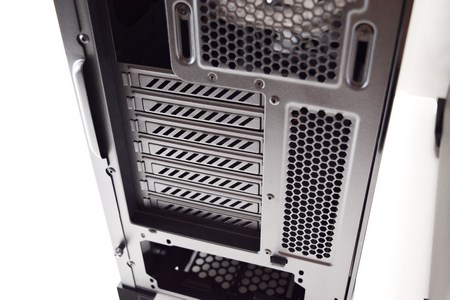
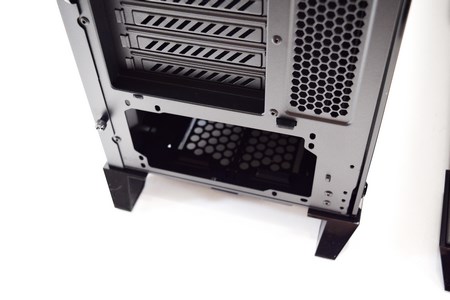
The rear is also identical in both models with sole difference the fans used (120mm HD120 RGB in the Spec-Omega RGB and regular 120mm in the Spec-Omega).
Moving at the base of both towers we find a small removable air-filter and a thumbscrew used to hold the internal 3.5" drive cage in place.
THE SPEC-OMEGA RGB INTERIOR
As already mentioned the Spec-Omega RGB is a medium-sized mid-tower and so as you can see both towers have limited interior space available.
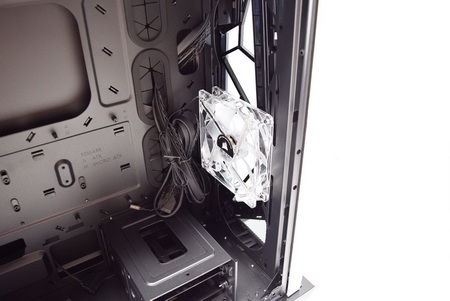
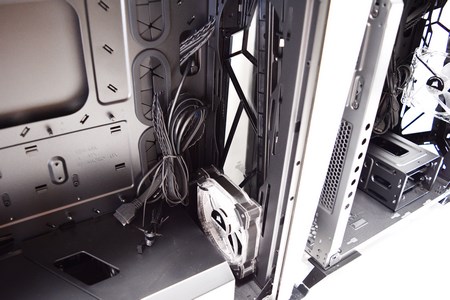
Although both fans are mounted on the interior of the metal frame you can move them on the outside (in the fascia pretty much) to increase space for larger radiators (or dual fans in push and pull).
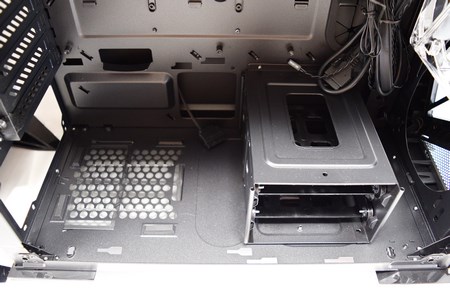
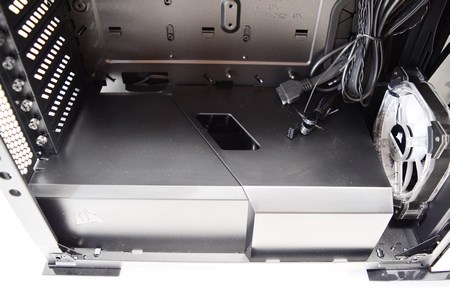
The single most important difference between these two cases (RGB aside) is the introduction of a removable plastic power supply shroud/cover in the new RGB version.
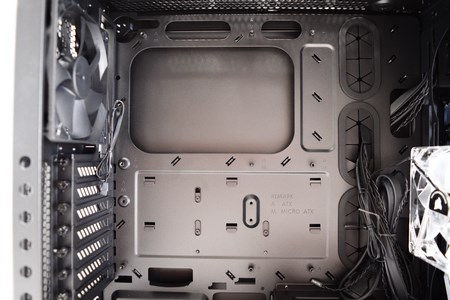
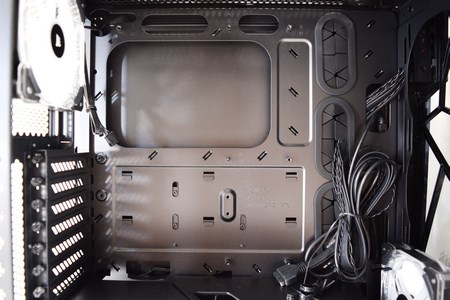
The mainboard plate of both towers has four rubber grommets and a very large hole underneath the CPU area.
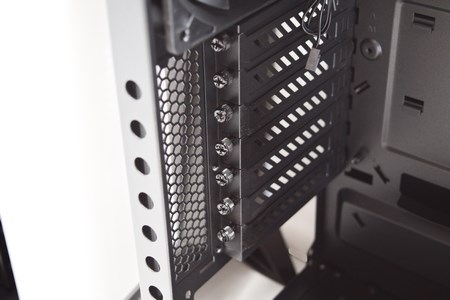
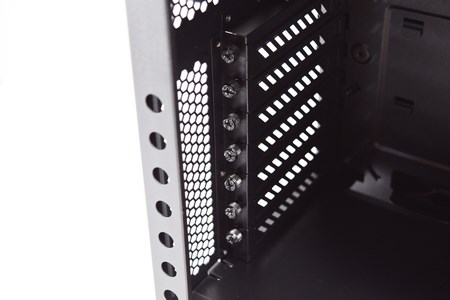
All 7 PCI expansion slots use regular thumbscrews.
Taking a look from the other side of the case we see that both models are almost identical.
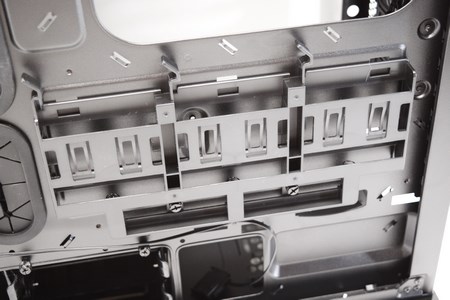
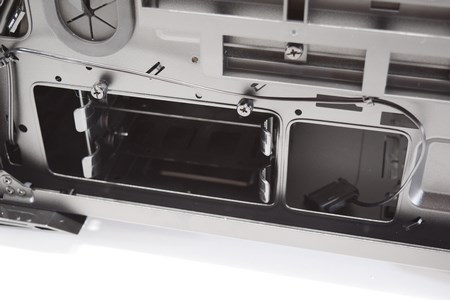
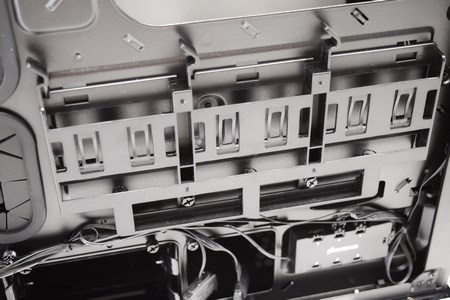
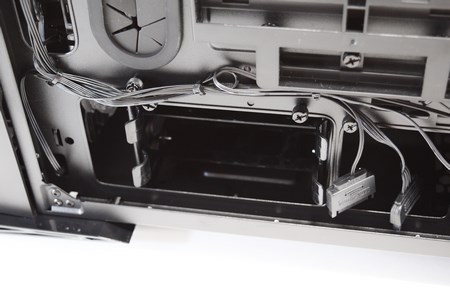 Both have a single vertical drive tray that has enough space for three 3.5" drives and two drive trays placed in the removable drive cage.
Both have a single vertical drive tray that has enough space for three 3.5" drives and two drive trays placed in the removable drive cage.
These trays are made out of plastic and are quite sturdy.
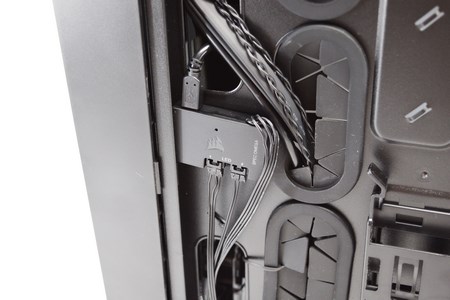
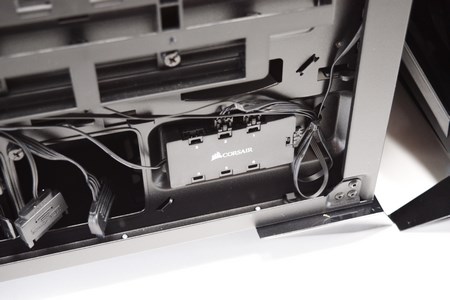
The difference is that in the Spec-Omega RGB version there's a RGB LED strip controller and a 6-way fan hub.
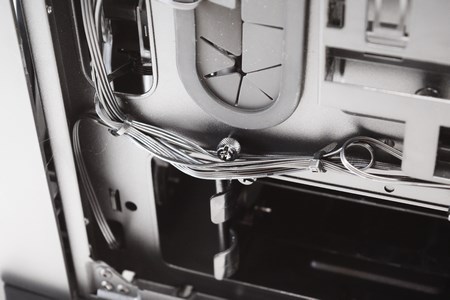
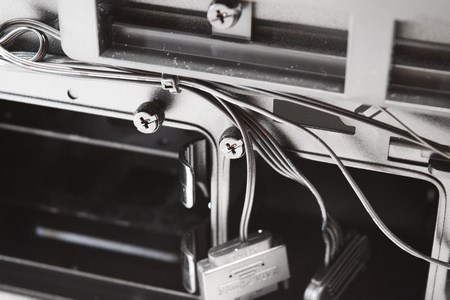
To remove the plastic PSU shroud/cover you will first need to remove these two thumbscrews located over the removable drive cage.
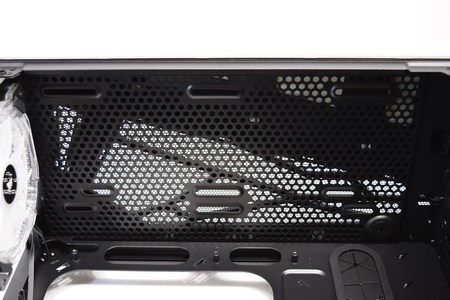
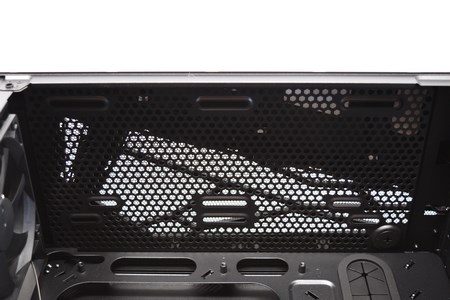
Here you can see the top fan/radiator area from inside both cases.
BUILDING THE SYSTEM
As always the purpose of this section is not to build a functional system but rather to showcase what you can expect from the case at hand in terms of interior space.
Once the PSU shroud/cover is removed both towers are identical in terms of interior space (because of that we’ll be just using the RGB version from this point forward).
Mounting a 2.5” drive in the rear tray is very easy, just push it into place as seen above.
An ATX sized mainboard doesn’t leave that much free space inside the case but more than what one could expect.
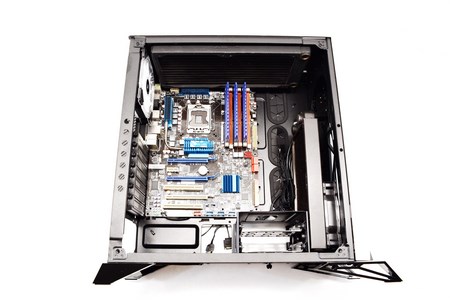
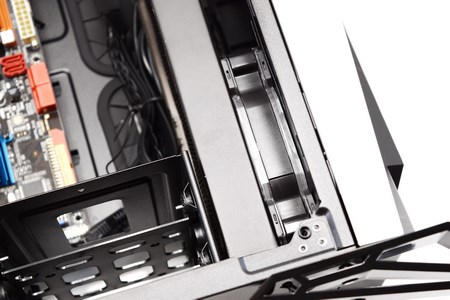
As stated earlier you can mount up to 360mm radiators at the front and 280mm at the top with any thickness you want (however over 30mm thick and you will either need to remove the drive cage or place the fans in the fascia – likewise the fan area at the top is in the removable plastic cover).
Also with enough room for 170mm tall CPU coolers you should have no problem choosing one.
The 7 holes above the PCI expansion slot thumbscrews may not look very important but it’s a feature we’d certainly like to see with other cases by CORSAIR (including their Obsidian 900D).
Mounting a long graphics card like our GTX 590 (286mm long) doesn’t leave much space until the front radiator/fans so do keep that in mind.
Our usual PSU might just be too long for the Spec-Omega cases (if you remove the drive cage however there’s no limit in length).
Finally here you can see the original Spec-Omega and the Spec-Omega RGB fascia to have a better understanding about their main difference.
NOISE LEVEL TEST

After giving it much thought we decided on performing noise tests with each PC Case we receive by placing our ExTech HD600 vertically ontop of each case to measure the noise levels emanating from the pre-installed fans at both 50% and 100% with the help of a fan controller (if the case doesn't have one we use our own).
CONCLUSION
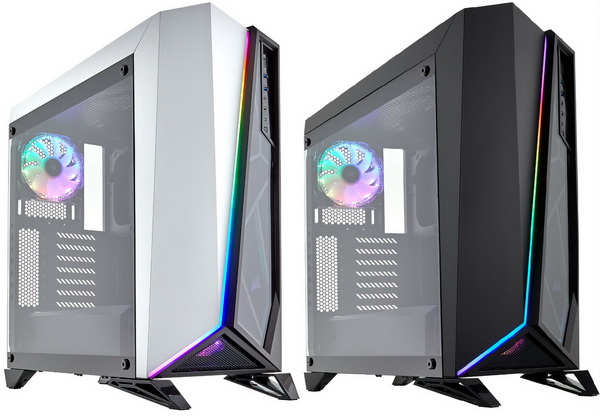
Having both the Spec-Omega and the Spec-Omega RGB in the lab at the same time made us realize just why CORSAIR went the extra mile into revamping the original with an RGB LED strip, two HD120 RGB LED fans and a PSU shroud/cover. Sure neither model is the king of quality and available features but thanks to their compact size they should be ideal for gamers with limited space on and/or beneath their desks while in terms of looks well let’s just say that the RGB version should stand out quite a bit. Of course being somewhat compact also means there’s limited interior space and although a total of 5 drives may not be what we’d call a good number surprisingly enough you can still place two large radiators inside (240/280/360mm), tall CPU coolers (170mm), long graphics cards (370mm) and long PSUs (180mm). Compatibility with CORSAIR’s iCUE software not only means you have total control over the speed of the two HD120 RGB fans (although quite loud in extreme mode) but you can also control the color and mode of both them and the front LED strip.
With a current price tag of USD149.99 inside the USA (Amazon.com) and 140Euros inside the EU (Amazon.co.uk) the Carbide Series Spec-Omega Mid-Tower is priced just about right for what it offers. Granted it may be roughly 50% more expensive compared to its predecessor the Spec-Omega but the two HD120 120mm RGB fans combined with the front RGB LED strip create a much better effect while the PSU shroud/cover can improve interior looks by hiding most of your system cables. Ontop of that add the ability of choosing the color and mode for the fans and the LED strip via CORSAIR’s iCUE software and it shouldn’t be a surprise that the Spec-Omega RGB checks enough boxes to get our Golden Award.

PROS
- Good Build Quality (Tempered Glass Side Panel & Partial Fascia)
- Design / Looks (Tempered Glass / RGB LED Fans / Fascia RGB LED Strip)
- iCUE Compatible
- Space For Up To Six 120 / 140mm Fans and / or Two 240 / 280 / 360mm Radiators
- 2 Pre-Installed HD120 Fans
- PSU Area Shroud / Cover - Bundled Fan Hub / RGB Controller
- PCI Expansion Slot Holes (Easier Installation)
CONS
- Overall Interior Space
- Lacks Top & Front Air Filters
- Noise Levels (At Extreme Mode)

 O-Sense
O-Sense

.jpg)



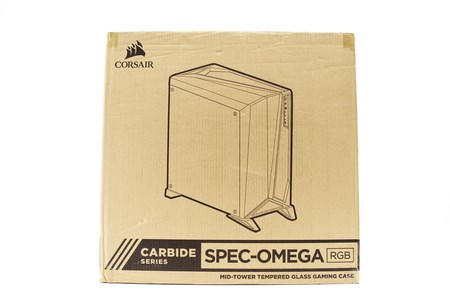
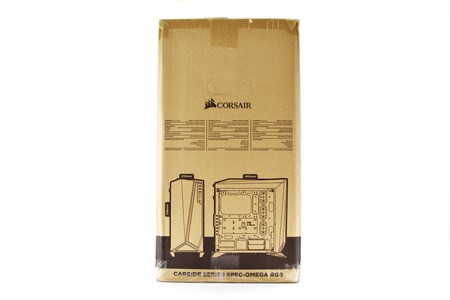
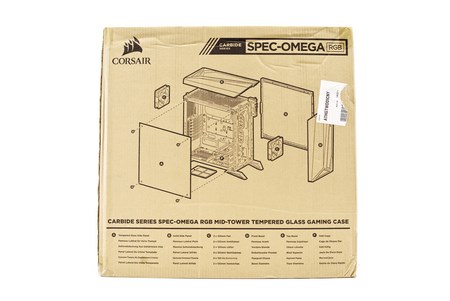
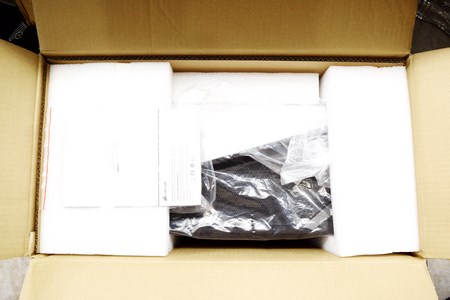
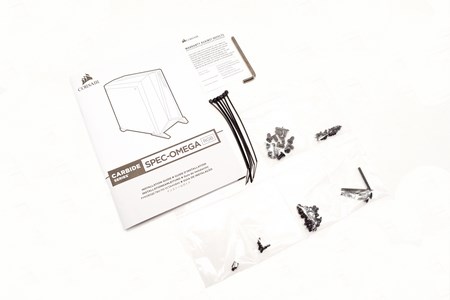
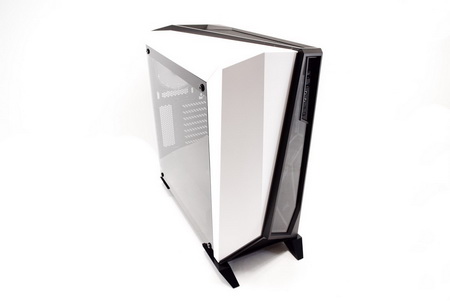
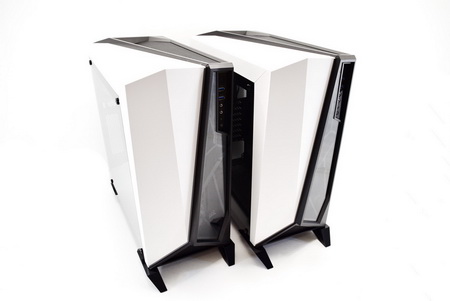
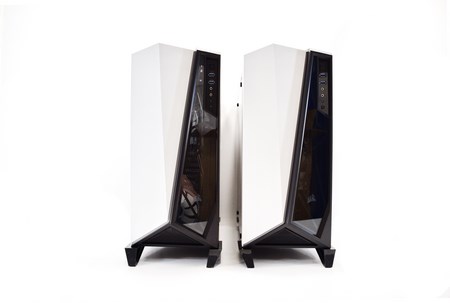
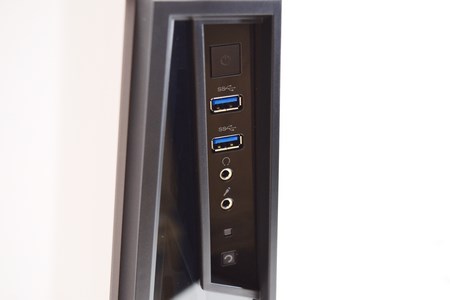
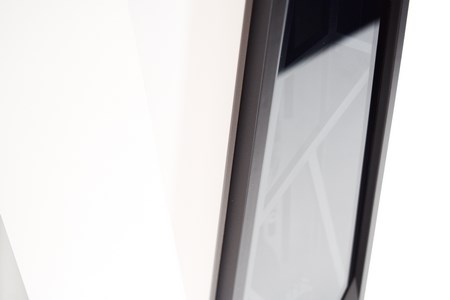
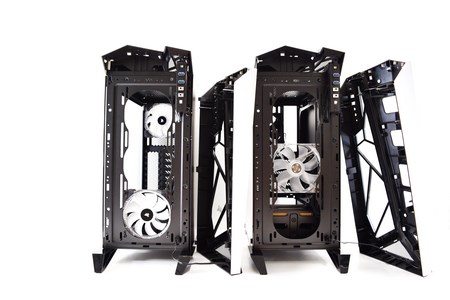
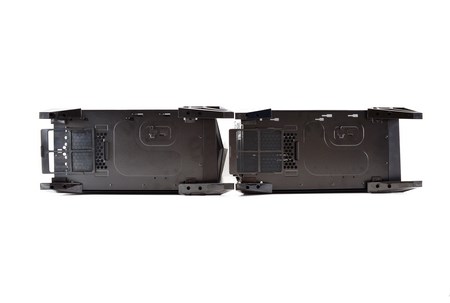
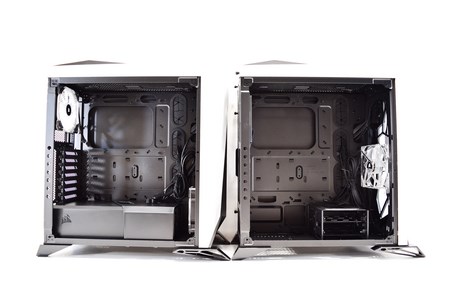
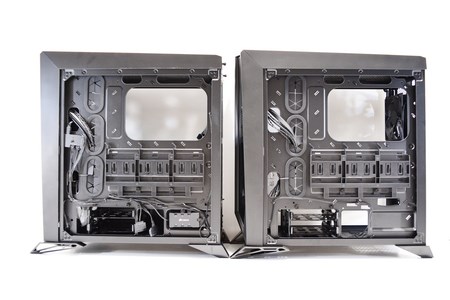
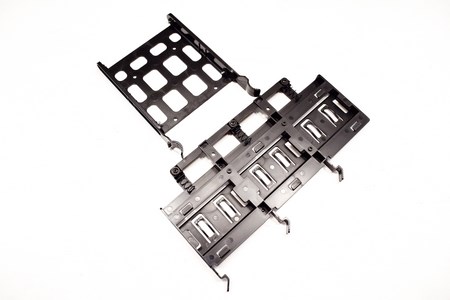
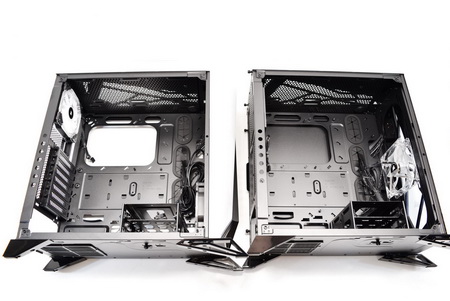
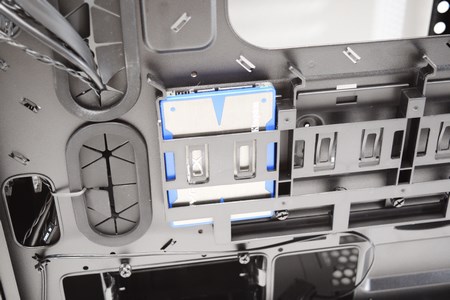
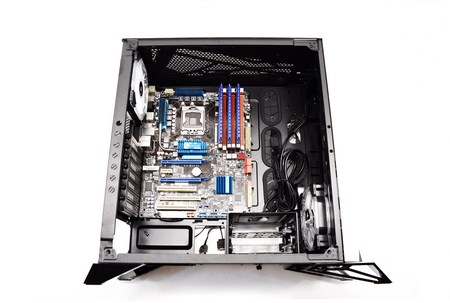
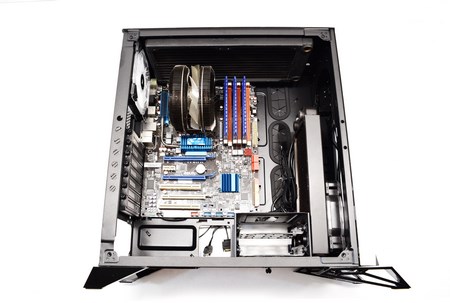
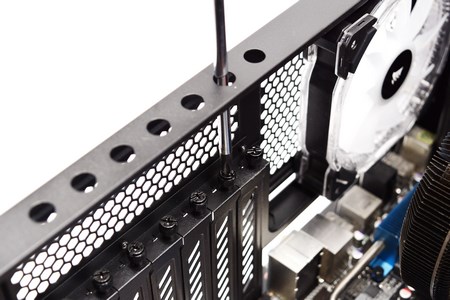
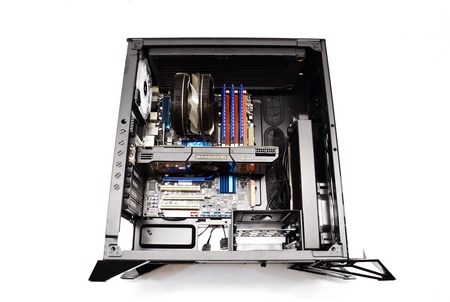
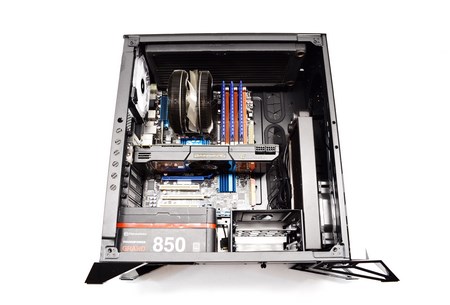
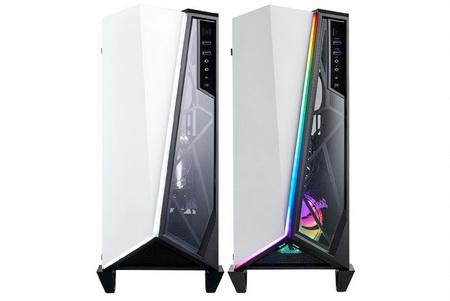


.png)

